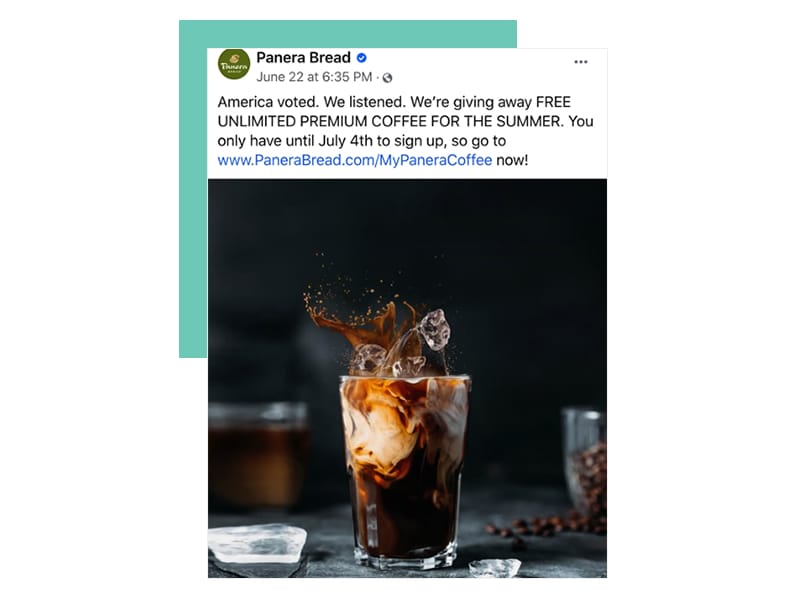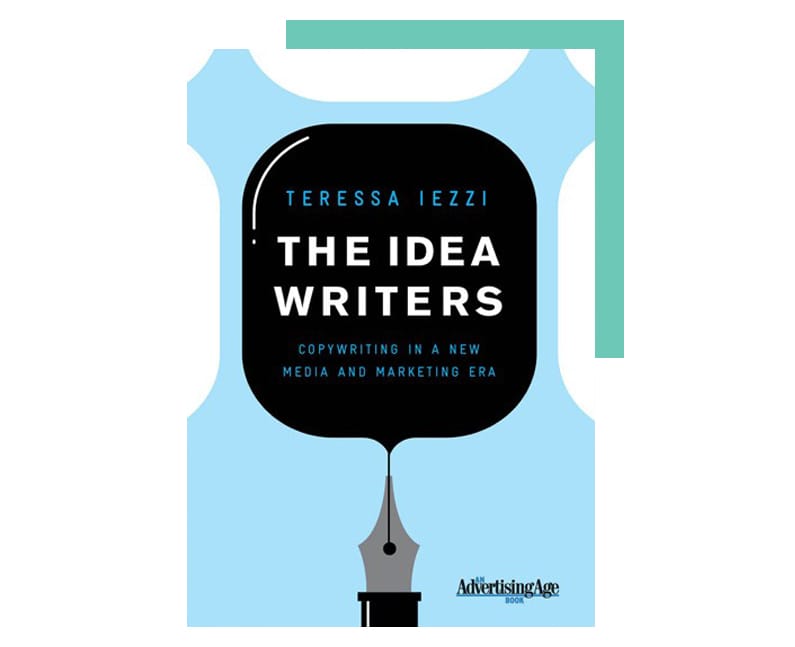Getting ready to write involves more than sketching out an outline.
Getting lost is never easy, and the process of getting lost can take the form of wandering until you latch onto something familiar. This way the familiarity can help steer you back toward familiar ground. In a way, this is kind of like writing without direction–without knowing what a piece of content is going to be about.
I only compare getting lost with content creation because the exact same thing happens when you write without a game plan. Because without one, your copy reads just as if you were lost and trying to find your way to the larger point.
Certainly, the Chief Content Officer at MarketingProfs, Ann Handley, always writes with a game plan in mind. She mentions in her book, Everybody Writes: Your Go-To Guide For Creating Ridiculously Good Content, that your writing may appear as if it’s “flailing… because [you] haven’t thought about an idea enough to find [the] key point.”
For example, consider Domino’s. In what is a colossal branding oversight, the Russian branch of Domino’s Pizza put the offer out there that it would provide 100 free pizzas for 100 years to anyone who got a tattoo of their logo.
Sounds crazy, something maybe only one or two diehard Domino’s fans would do, right? Wrong. The response was so epic, that the company had to pick and choose among the participants before selecting winners.
What you can learn from this is that your content creation efforts need a plan–one with a vision that includes an endgame. You need one to, as Handley puts it in the above-mentioned book, “[figure] out what you want to say before you say it.”
Prepare Physically and Mentally to Create Content
I mean, what physical and mental preparations do you really need to make? Writing is a sedentary activity–there’s not a whole lot of physical exertion accompanied with the keyboard keystroke–maybe carpal tunnel, but that’s another story.
This claim–that there’s not much to writing beyond a few mental computations–would run counter to what copywriting legend, Joseph Sugarman, tells you in The AdWeek Copywriting Handbook. In that copywriting manual, he defines copywriting as a mental process, yet on the page before it, he says:
“My greatest ads were written during a variety of circumstances. Many were well thought out before I put the first word on paper and they flowed out with hardly a correction. Other times, they would flow but you wouldn’t recognize the first draft from the last because of the number of corrections I made. Sometimes I would sit in an airplane and just write from takeoff to landing and come up with great copy. And other times, I used my computer with great success.”
So it’s clear from this passage that copywriting–content creation–has a physical component to it—something that takes place outside of your mind. Sugarman mentioned that sometimes the location of where his copy came from was different—he had to physically be in a different place.
Copywriting is, then, not only a mental process as Sugarman defines it. Copywriting is a physical one, as well.
Using the Domino’s Pizza example again, there’s literally a physical process to copywriting. In terms of a marketing campaign that actually worked, look no further than Panera Bread for an example.
On Facebook, the coffee brand ran a few ads that advertised their new coffee subscription program, but with a twist. Panera customers would get free coffee from June 2020 until early September 2020 if they signed up for the coffee subscription. And the coffee truly is free if you cancel the subscription before a certain date.
Source: Facebook
The whole idea behind the program is to get people to travel to their locations for free coffee. While you’re there, you might as well get something to eat since driving out just to get a coffee from Panera in particular would seem like a waste.
Panera isn’t giving out free coffee for the whole summer out of the kindness of its heart, though. What Panera’s doing is generating customer loyalty, upsell, and cross-sell opportunities by giving customers a reason to visit and stay in its stores.
How can MESH help you?
Founded by an experienced life sciences marketing industry veteran, we help you accelerate growth at every stage, from innovation to exit.
Schedule your FREE 20-min Zoom call today!
A comment on the above ad from one customer on Facebook said that they “think this is the beginning of a beautiful relationship.”
The point is that Panera had results in mind; they had a plan for this generous offer. But this example ignores the point that it’s the customers going to the coffee brand’s locations, not the marketer. So how is there a physical dimension to copywriting apart from a computer and a few keystrokes?
Location, Location, Location
It’s more than merely a mantra for real estate merchants. It turns out that many writers feel that location gives their writing a boost. (Remember Sugarman wrote his ads in many places–it wasn’t just at the office.)
This isn’t just a Sugarman thing, either. Other experienced content creators have had success experimenting with copywriting under different conditions. Established B2B copywriter, Andy Maslen, knows that for sure. He wrote about a couple tricks to boost creativity in his book, Persuasive Copywriting: Using Psychology to Engage, Influence, and Sell.
He wrote that there are three things that work for him when he’s creating content. When copywriting, these three tactics boost creativity:
- Adjusting location
- Experimenting with time
- Switching-up writing medium
These are proven tactics you may be familiar with, given current events. And yes, I do mean “proven tactics,” as in a study–not just something that’s a tried and true method. To that end, we end up with an MRP report titled, “COVID-19 Working from Home — Intent Trends Report— Intent Trends Report.”
MRP saw:
- How work-from-home policies will adapt in the future, perhaps growing as much as 400% in the U.S. and doubling in Europe;
- A 480% average lift in interest in video conferencing solutions from February to March 2020 across geographies and market segments; and
- The interest in virtual office and UCaaS solutions across all firm-size segments has grown dramatically from February to March, with a 135% increase across all topics of intent.
What this means is that in spite of the working conditions, as they exist now, as of this writing, there is intense interest in trying to do a job better. So if you’re trying to do your job better because of location, that squares as a location having something to do with your creativity–for better or worse.
This has an overarching effect on writing time and medium, as many homes aren’t typically outfitted with the same technology as the office, and because of the absence of the office, office hours tend to go by the wayside.
As far as the importance of planning in the content creation process is concerned, there’s a proven physical and mental correlation between location and time that matters to content creation.
This can be observed in how marketing has shifted in response to public health news. More empathy is required now–you need to learn to be sensitive to certain words and topics.
Many in creative professions have the ability to switch up where they work, either remotely, within the office, or otherwise, even before the turbulent times we’re in. This is the case in Teresa Iezzi’s book, The Idea Writers: Copywriting in a New Media and Marketing Era. Specifically, she compiled the records of the typical days of copywriters at their jobs.
Of note, the daily grind of a junior copywriter named Jordan Chouteau is relevant to what I’m talking about:
“10:00 A.M. Time to start the day… It starts when we are handed a brief. Our days are then spent “concepting,” …
There we think, talk, stare at one another, complain about the brief, break to gossip about a dude, order a coffee, complain about the brief, stumble upon an idea, build on that idea, decide we hate that idea…
After a few days of that, we present our magic-making to our creative director. He… oohs, ahhs, smiles, questions, kills… The next few days are spent repeating that… [And then] It’s that time we know we’ve got something.
Then it’s GO TIME…
Present to client.
Wait for feedback.
Get feedback.
Repeat…
11:00 P.M. Sitting at my desk writing headlines…
1:00 A.M. Screw this, I’m going home.”
What’s important here is the timeline. It stretches beyond the typical 9-5. Copywriting is, after all, a physical and mental process, influenced by location, time, and more. But companies are innovating despite urgent matters and evolving working conditions.
For example, many businesses in the restaurant industry offer their customers “contactless delivery.” This is delivery without ever having to interact with the delivery driver–a way to promote physical distancing. Papa John’s for example, is a company that does contactless delivery.
Regardless of the state of the world, this example shows that you need a plan to deliver your content (in this case, it’s literally delivery).
It matters, whether that’s changing the conditions of your content creation efforts or preparing your mind and body for its execution.
And remember, in copywriting, if you change one thing, you change everything–a statement true in many aspects of life.
What other ways do you plan your content creation? We would love to know! Tell us in the chat below.








